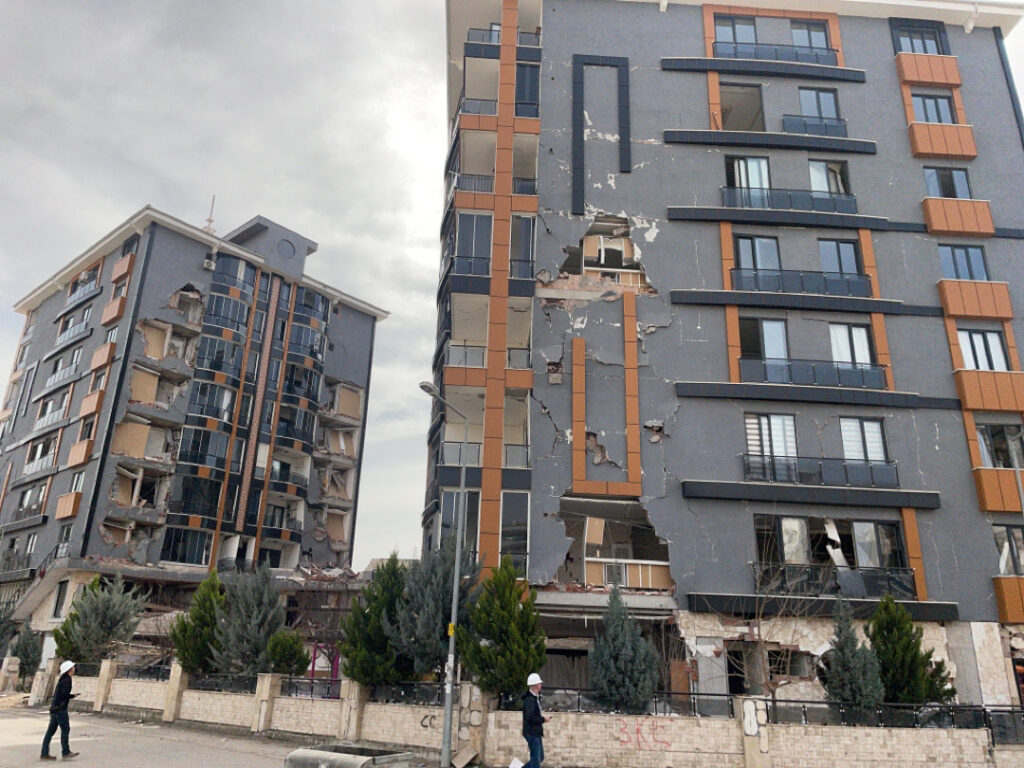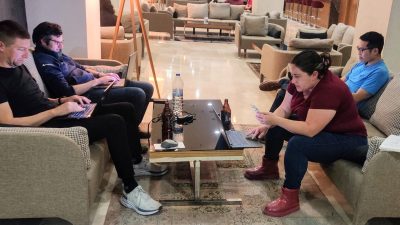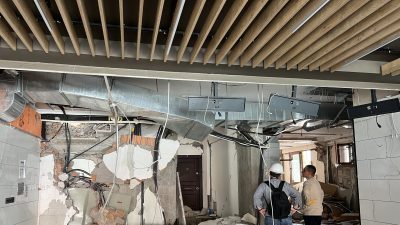March 5, 2023 – Day 6, Team 1
The last day of our reconnaissance trip was spent in Adiyaman, a city with a population of around 260,000. Our first stop was at an apartment complex that contained three seemingly identical 10-story buildings. All three experienced similar concrete stair and in-fill wall damage. The central building of the three experienced a collapse of its first level columns in one corner, causing the front left portion of the building to collapse down one story and simultaneously tear away the central staircase of the building. Our team tried to figure out why all the columns supporting this section would collapse, but not any other sections or other buildings. Throughout our trip, we observed buildings that looked very similar but had very different performances. Perhaps there were interior alterations, or maybe they were built at different times by different contractors, the engineering or the construction quality could have differed. However, these buildings were part of a complex built most likely at the same time and by the same contractor—leading to the question then, why did one building have such a different structural performance?

Front elevation of central apartment building at residential complex, with first-story collapse.

Adjacent apartment building with wall infill and concrete stair damage.
For damaged buildings that were still standing, residents were onsite collecting their belongings, a sight we observed often throughout the region.
Our next stop in Adiyaman continued the theme of isolated building collapses—a mixed-use complex with numerous similar residential buildings had a single building with a collapse of a portion of the building. The buildings on this complex were not as uniform in layout as we saw at the first stop but, apart from the collapse, the remaining buildings all suffered the typical damage we had seen throughout the trip.

Building collapse at mixed-use complex.

Neighboring complex buildings with typical wall infill damage.
A resident of the complex described their experiences of what had happened; during the first earthquake all the buildings on the complex remained fairly intact allowing the residents to evacuate their units. The collapse occurred during the second earthquake and the damage to the other buildings was amplified.
Upon entering one of the buildings, we were able to observe the damaged concrete shear walls with spalling at these shear walls clearly stopping at the lap splices of the vertical reinforcement. We also determined the reinforcement at these shear walls to be #4 verticals with #3 horizontal bars, which are small for buildings and walls of this size. Additionally, we commonly found spalling at the concrete column base throughout the complex.

Spalling at interior concrete shear wall.
Our team concluded our visit to Adiyaman at a local mosque that had experienced one of the few minaret collapses we encountered. The collapse offered insight into the construction of these imposing countrywide landmarks. The staircases within the interior of the minaret offers the muezzin pathway to the top of the minaret so that they may give the call to prayer.

Collapsed minaret at local mosque in Adiyaman.
Following our observations at the local mosque we continued to drive through the city observing the established AFAD tent encampments, some dangerously close to existing buildings that were being demolished. Governmental buildings appeared to have performed well and were serving as centers of refuge for the city.



